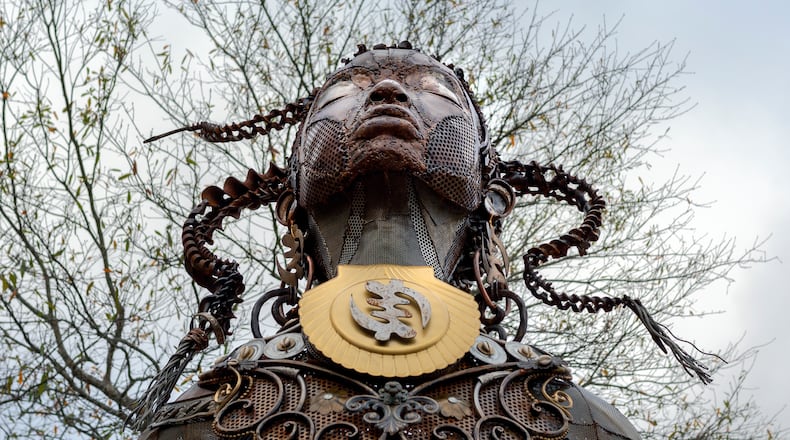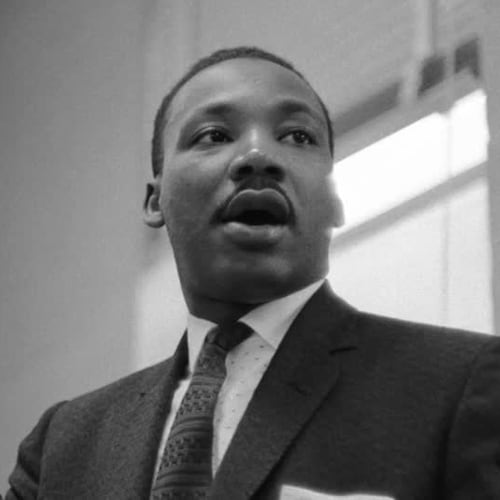A forceps delivery is risky to both the baby and womb of the mother.
This was especially true one day in June 1845, when a 17-year-old enslaved woman named Anarcha Westcott suffered protracted labor on the Westcott Plantation in Montgomery, Alabama. An ambitious young doctor named J. Marion Sims was sent to assist the birth. Enslaved people were valuable assets to those who had purchased them, and the birth of a healthy enslaved baby meant potential profit, whether as a future worker or property to be sold.
Sims used forceps. The baby died. Anarcha’s birth canal tore.
It might have been another tragic but common incident in the age of antebellum medicine. Yet, Anarcha’s injury and the 30 surgeries she endured over the subsequent three and a half years — without anesthesia — at the hands of Sims as he tried to repair the tear, is one of the most infamous cases in American medicine. Anarcha and two other enslaved women, Betsey and Lucy, all patients of Sims who suffered birth canal tears, remain the center of conversations about the ways enslaved Black people were sometimes used for experimental surgeries of the era.
Yet, 175 years later, Sims is still called “the father of gynecology.”
For all the attention Sims garnered, the stories of his original patients, Anarcha, Lucy and Betsey, and what happened to them faded. In recent years, however, scholars, writers and artists have refocused the case, not on Sims, but on the three women and the nearly 10 enslaved women who were subsequently experimented on by Sims. Those efforts have encouraged a reevaluation of Sims, and have also raised questions about consent, humane care and the persistent distrust of the medical establishment within pockets of the Black community.
“I want to focus on the fact that any of these women could have been our great, great grandmothers, a great, great, great aunt; it could have been anybody,” said Harriet Washington, author of “Medical Apartheid: The Dark History of Medical Experimentation on Black Americans from Colonial Times to the Present.” “It could have been any enslaved woman.”
“Inherently Coercive”
Credit: Steven Zucker, Smarthistory
Credit: Steven Zucker, Smarthistory
Sims claimed in his autobiography, “The Story of My Life,” that by operating on Anarcha he perfected the technique to close the tears, which are known as vesicovaginal fistulae and allow urine or feces to leak through the vagina. Though his claim of a cure was disputed by his peers and some modern scholars, he still has significant defenders within the medical profession who consider him a pioneer in women’s health. Tools he developed, such as the speculum, are staples in the care of women’s reproductive health to this day. Statues of the doctor have been erected from Montgomery to New York City to Europe, where he practiced medicine after leaving Alabama before the Civil War.
There is even a famous illustration by 20th century artist Robert Thom, depicting Sims and some of his interns about to treat Anarcha. In the picture, Lucy and Betsey peer from behind a curtain.
Michelle Browder remembers first seeing the picture while she was a student at the Art Institute of Atlanta.
“There was something that stuck out to me about that painting and how those women genuinely look scared as these three men stood around them,” Browder said.
Browder is a visual artist and community organizer in Montgomery. Her family has deep roots in the city’s civil rights history; family member Aurelia Browder was arrested for trying to desegregate the city’s bus system in April 1955, eight months before Rosa Parks was arrested for doing the same thing. Michelle Browder owns a tour company that spotlights the Alabama capital’s lesser-known points of Black history, including Aurelia Browder’s participation in the federal lawsuit that ended legal segregation in Montgomery’s bus system. Anarcha, Lucy and Betsey’s story also is prominent in her tours. In many ways, their story is hidden in plain sight. The old Westcott Plantation where Anarcha lived is now one of Montgomery’s oldest Black neighborhoods. A statue of Sims stands under a shady tree just a few yards away from the Capitol steps. And the building where Sims experimented on the women still stands in downtown, honored by an official historical marker. The women are not mentioned on the sign.
“The marker says he’s ‘the father of gynecology.’ Wow. So, I said, ‘Well, where are the mothers?’ If you have this white man up in front of the state Capitol, a Capitol that Black people built, and you’re calling him the father of gynecology, where are the mothers, because the mothers were Black,” Browder said. “They were enslaved women.”
Since 2014, and after reading Washington’s book which outlines the case of Anarcha, Lucy and Betsey, Browder was on a mission to erect a monument honoring the women in Montgomery. As most accounts of chattel slavery were, the women’s experiences were horrific. Whether they were brought to Sims to be treated so they could bear lucrative offspring or whether he purchased them so he could treat them on his own schedule, the women were forced to live in a small outbuilding behind Sims downtown office. Fistulas were a common problem among all women, Black and white. Even with antebellum gender dynamics and property laws regarding married women, white women technically could still say yes or no to a treatment. Enslaved Black women had no such agency.
“If you’re an enslaved person, refusing to follow your master’s orders would result in, at minimum, a severe beating, you could be killed, you would be punished dramatically and sometimes persistently until you acquiesced. So that means there was no voluntary consent possible. Enslavement is an inherently coercive state,” Washington said.
Credit: Steven Zucker, Smarthistory
Credit: Steven Zucker, Smarthistory
For three and a half years, the women underwent procedure after procedure. Sims, by his own account, would sometimes invite other doctors to observe. He tried different techniques to close the fistulas including metal clamps sutured in place, silk threads and eventually silver threads. Inevitably the wounds would become infected again and the women would have to undergo yet another experimental procedure. But each time Sims did not give the women anesthesia beforehand. Instead, he’d have the other women hold down the one being operated on, only administering opium after surgery so the women would lie still for days while their wounds healed. There were no nurses or medical students to care for the women while they healed, so they took care of each other in the outbuilding Sims had constructed for Black patients.
Journalist and author J.C. Hallman has studied the cases of Sims, Anarcha, Betsey and Lucy for years and is writing a book on his quest to uncover Anarcha’s life story. He and Washington say that although early in their development as surgical aids, any number of drugs, from opium to chloroform to nitrous oxide, could have been used to ease the women’s pain. And both refute the popular claim that Sims thought the drugs were too unproven and might prove lethal. But Hallman says the statement attributed to Sims, that Black people don’t feel pain in the same way whites do, wasn’t said by Sims but by his 1950s biographer, Dr. Seale Harris.
Credit: Steven Zucker, Smarthistory
Credit: Steven Zucker, Smarthistory
“It’s very likely Sims believed that,” Hallman said. “He described Black women in excruciating pain, so he, of course, understood Black women could feel pain, but he was doing it anyway.”
Hallman said Sims was trying to perfect the surgery because he believed if he could master it successfully, it would be a lucrative line of medicine. After 1849, when he claimed to have cured Anarcha, he and his family moved to New York City where he helped found the Woman’s Hospital. Anarcha was not cured, Hallman said. In examining patient intake records from Woman’s Hospital, Hallman found an entry where Sims operated on her at least one time at that hospital after Sims’ claim that he’d healed the wound. She’d been brought there by the person who’d enslaved her. Despite this, Sims’ reputation as a gynecologist grew. He eventually practiced in Europe, serving royalty. But as his recognition grew, the lives of the Black women he’d treated fell from view. Yet, recent research shows that the notion that Black people don’t feel pain as acutely as whites persists into the 21st century.
“These Were Girls”
Last fall, Browder realized her dream. Just a few blocks from the office where Sims conducted his experiments, and a short walk from the National Memorial for Peace and Justice, Browder unveiled a trio of sculptures representing Anarcha, Lucy and Betsey. It took Browder years of collaboration with artists from Las Vegas to San Francisco to Montgomery to construct the monument, which stands on land she owns. Hundreds of pounds of scrap metal, from bicycle chains, to scissors, to light-switch plates were donated. From them Browder constructed the sculptures. She apprenticed under other metal artists and learned to weld so she could do much of the work herself.
“I wanted to make sure that people understood that these were girls that were enslaved, tortured, and then drugged afterwards,” Browder said. “And so I wanted each of these girls to have their own identity, because that was taken from them.”
Credit: Steven Zucker, Smarthistory
Credit: Steven Zucker, Smarthistory
Betsey is depicted as pregnant. Lucy is the smallest, a reminder of how young the teens were when Sims experimented on their bodies.
The tallest, towering 15 feet, represents Anarcha. Browder has given her metal braids that seem caught free in the wind. But in the center of her body, there is an empty space. A few feet behind her is a small metal pouch representing what once filled the vacant space; her womb.
About the Author
The Latest
Featured







